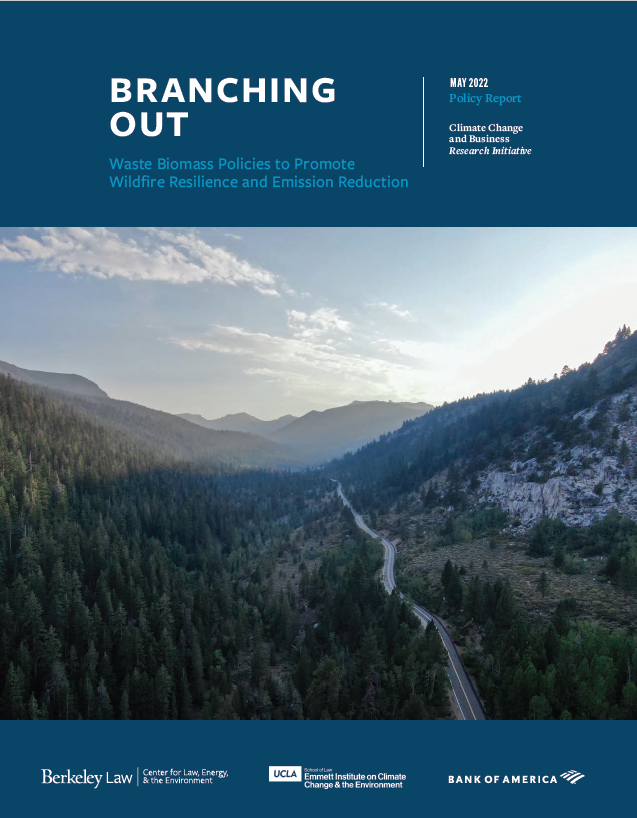May 2022
 o California’s devastating wildfires over the past several years, government and private landowners are removing more debris and residual material from forested areas, such as removing dead trees and creating fire breaks. This vegetation management is one component of a broader forest and wildfire management strategy. However, when land managers complete these actions, they must remove and dispose of the residual waste material in a responsible manner. Otherwise, they risk this material burning in the next fire or too much of it decomposing, with associated carbon emissions and air pollution. But land managers currently have little financial incentive for removing the material, often leaving excess debris on the forest floor.
o California’s devastating wildfires over the past several years, government and private landowners are removing more debris and residual material from forested areas, such as removing dead trees and creating fire breaks. This vegetation management is one component of a broader forest and wildfire management strategy. However, when land managers complete these actions, they must remove and dispose of the residual waste material in a responsible manner. Otherwise, they risk this material burning in the next fire or too much of it decomposing, with associated carbon emissions and air pollution. But land managers currently have little financial incentive for removing the material, often leaving excess debris on the forest floor.However, promoting markets for debris forest material without placing parameters on the source or timeframe of the material collection could lead to unintended negative consequences, such as clearing of healthy forest material that does not promote wildfire resilience. Therefore, state leaders should deploy the solutions presented in the report over a limited time period, focused narrowly on debris material, in regions with the greatest need for state support (due to material accumulation or potential for community benefits, or a combination of both), all while integrating practices into the broader forest management and wildfire resilience context. A full list of solutions is available in the policy report.
Several key barriers and solutions emerged from the conversation, including:
Barrier 1: Heightened Risks for Investors Given Unpredictable Supplies and High Costs. Investors are unlikely to provide the necessary funding and financing to salvage economic value from waste feedstocks given the high risks and costs, coupled with uncertain revenue.
- Example Solution: The Governor or state legislature could serve as a state broker for woody feedstock supply, potentially alongside local governments, facilitated through the California Natural Resources Agency, as the Governor’s Office of Planning and Research has begun piloting.
Barrier 2: Lack of Markets for Lower-Value Forest Biomass Limits Viability of Investment in Large-Scale Forest Health- and Resilience-Oriented Vegetation Management. Lenders and financiers lack the financial certainty needed to provide startup capital. State support, through policies and targeted investments, could build these markets and promote resilient practices.
- Example Solution: The Governor or state legislature could direct the Governor’s Office of Planning and Research to support data mapping and brokerage initiatives for regional supply chain management.
Barrier 3: Lack of Local Infrastructure & Capacity. Under-resourced communities, including rural and disadvantaged communities, often cannot capitalize on the potential opportunities for economic development or fire management along multiple segments of the supply chain, from gathering raw material to producing a usable product, despite their proximity to forest or agricultural resources.
- Example Solution: The Governor or state legislature could dedicate resources towards forest resilience workforce and economic development at local and regional levels.
To see the full list of proposed solutions, download the report here.
Contact Ethan Elkind, Ted Lamm, or Katie Segal for more information.